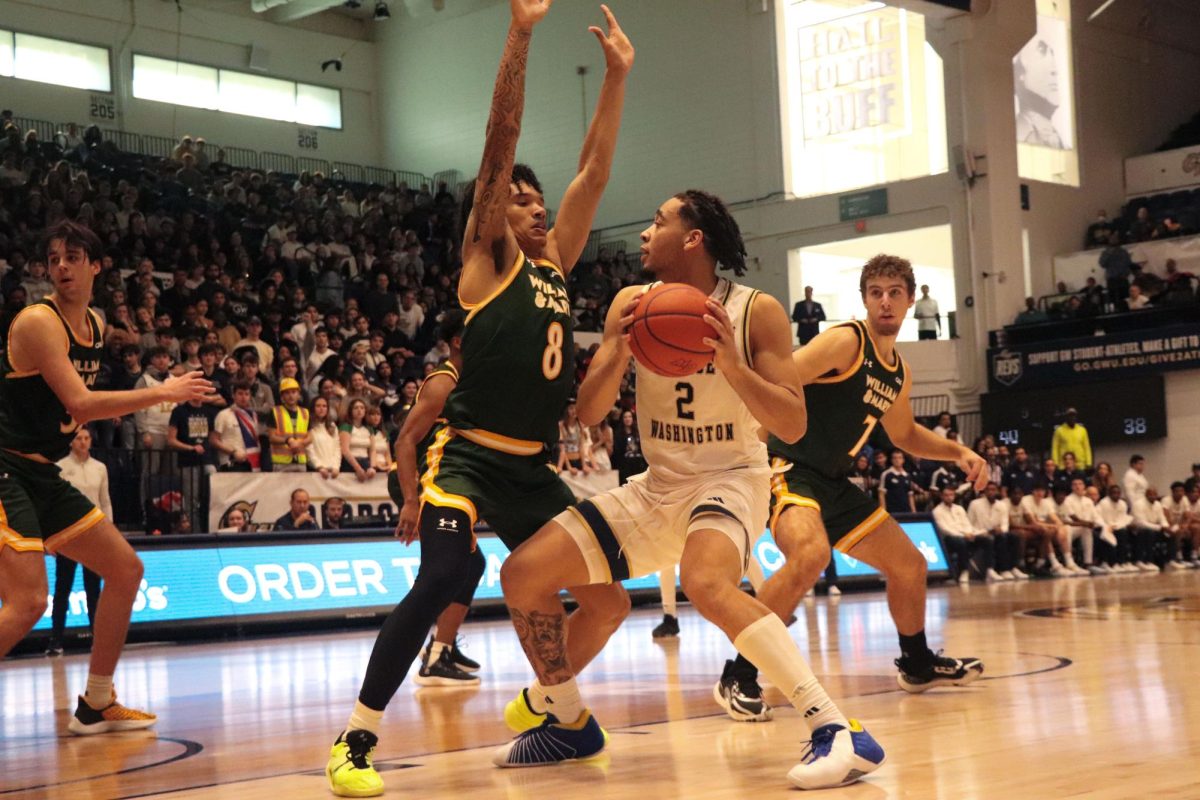To the outside observer, it might seem the many disciplines of the martial arts are similar.
But upon closer examination, the martial art forms are vastly different, as exemplified by GW’s four martial art clubs. Three focus on self-defense. The other is geared toward competition in tournaments.
The school clubs are karate, jukido jujitsu, tae kwon do and hapkido. Each offers the basics: kicks, punches, throws and sweat. But beyond that, one can find a great cardiovascular workout, stress relief and fun.
What exactly are the martial arts all about, or perhaps more importantly, what are they not?
The courses don’t teach the art of bullying. And the goal is not to break a neck with one move. It’s certainly not, “how to fight with people and win effectively each time,” except for maybe tae kwon do, which stresses beating an opponent – but only in the ring.
And maybe that’s why tae kwon do is the largest martial art club on campus, with about 50 members, club president Justin Veazey said.
“This year, however, tae kwon do is an Olympic sport,” he said. “So the popularity could be because of that. Unlike the other martial arts, ours is sport-oriented, there’s a point system.”
So instead of learning how to just protect against an offender, students learn how to hit and punch to score points.
Tae kwon do means “ways of kicking and punching,” and it is just that. It’s foot and hand only, no weapons.
“We do lots of footwork,” Veazey said. “First we bounce around a lot. Usually for about 20 to 30 minutes. We also do a lot of kicking and punching. We kick on pads, we work on countering kicks. And there’s also plenty of stretching.” But it’s not all work and no play. Classes are exhausting, but fun, he said.
Most importantly, club members learn to fight themselves, pushing the envelope to see what they are made of mentally and physically. Tae kwon do, like the other arts, is a self-made product – people who practice it get out what they put in, Veazey said.
Tae kwon do has some goodies to take home as well. Belt tests are at the end of every semester, and chances of advancing are greater the lower the belt. It has 10 ranks, and each belt is worth two ranks.
Karate, hapkido and jukido jujitsu offer a more practical approach – self-defense. But they are more than just protection from a mugger in the alley. These arts also are about getting in touch with oneself.
Karate, or “empty hand,” involves the same endurance, practice and ability as other sports. But the main goal is to fuse the mind and body, black belt instructor Tom Parsons said.
“Karate offers strength in life,” he said. “Of course, we do practice hard and work on fundamentals. But the main goal is to reach higher levels of self-development and self-mastery.”
The skills learned can be applied to many of life’s tasks from decision-making to class work. Take the kata. Kata is a technique worked on in class that involves envisioning a series of opponents, Parson said. The challenge is how to handle each. While it’s true that memorization in the class will pass this test (of how to handle each) in real life it’s about decision making. It’s about eliminating indecisive movements and weakness in our own mind, he said.
“What’s tough about kata is that it’s mentally taxing,” Parsons said. “Aside from the physical aspect of punching, kicking and blocking, it’s mentally tough. You have to know how to defend against a series of opponents.”
Similarly, sparring, which is one-on-one battling, also extends beyond the dojo, where the class is taught.
“When you’re sparring, not only do you work on mastering your own aggression, but you have to learn to control your own opponent, whoever the opponent is,” Parsons said.
GW hosts hour-and-a-half sessions. Each is broken down into three segments: technique training, kata and sparring. Parsons said the emphasis on each depends on a loose monthly theme – what needs to be polished? In addition, effective motion is taught in all aspects of karate, eliminating time and space between kicks and punches.
“We also work a lot on connecting that to strong natural ways and stances, as in balancing the body carefully,” Parsons said.
Balance of the body and self-awareness are the goals of the martial arts. But in Jukido Jujitsu, the goal is mastery of the self and weapon.
Jukido jujitsu is in fact “way of gentle power.” Its purpose and method of combat is different. Instead of attacking or blocking, it’s about controlling the attacker. So the art invokes chokes, holds, throws and kicks. The syllable “ju” means gentle, and that is the idea of the art. It means seeing an opponent’s attack, and instead of blocking or attacking, controlling the attack. And perhaps that is what separates this self-defense martial art from karate. Weapons are used in this style as well.
Club president Gregory Szlyk said classes tend to be small, unlike tae kwon do. But he said this benefits the student. The classes are intensive.
“First we stretch for a little while,” Szlyk said. “Then we work on the basics of practice.”
Those basics include falling on mats, specialized throws and self-defense.
The art is old, originating from 17th-century Japan. It evolved from the warrior class, samurai, which is why weapons are used. Perhaps the weaponry aspect is not so practical today, but it teaches the control of oneself and a weapon.
Hapkido does offer some contemporary practicality, hapkido instructor Robert Brown said.
Hapkido is a Korean self-defense style without weapons. It employs circular foot sweeps and circular punches. It is “the art of coordinated power.”
The circular motion allows for fluidity between moves – one move flowing with the next. Other arts employ a punch and a stop or a kick and a stop.
This style commands absolute feel for one’s body. In fact, it is often used for spiritual development.
“But that has no bearing on the participants,” Brown said. “We have a wide range of men, women, graduates and undergraduates.”
Any of these martial arts can be practical, because the one constant they all offer is self-discipline and self-mastery – a self-defense for any of life’s battles.







